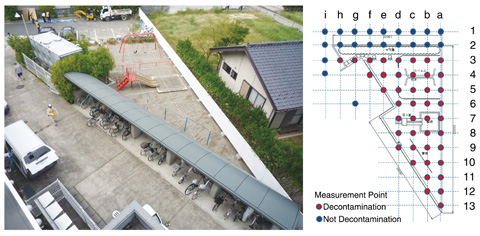
Fig.1-23 Decontaminated playground lot and air radiation dose rate monitoring posts
Table 1-3 Air radiation dose rate before and after decontamination

After the nuclear accident at the TEPCO’s Fukushima Daiichi NPS, living spaces were contaminated with radionuclides and many people were forced to evacuate and live in anxiety. Children, who are sensitive to radiation, were able to play outdoors only for limited periods. Decontamination of schoolyards has been prioritized and has progressed rapidly on the basis of investigation by JAEA in May 2011. However, playground lots in residential areas were not necessarily prioritized in the same way. To open and expand outdoor spaces for children, we conducted a trial decontamination of a playground lot in a residential area in the city of Fukushima. Data acquisition was conducted to study the available techniques and their effectiveness in cleanup efforts and to investigate the effectiveness of areal decontamination in reducing air radiation dose rate. The trial also served another purpose: it allowed nonprofessionals and the general public to learn how to decontaminate their residential areas using commercially available tools and commodities.
A relatively small (150 m2) playground lot was chosen for the trial decontamination; playground equipment, ground surfaces, and side gutters were of interest in this trial. The selected playground lot had no enclosing fences and did not offer any protection from radiation coming from the surroundings (Fig.1-23).
Decontamination work proceeded from higher to lower locations, i.e., from playground equipment such as slides, swings, and horizontal iron bars to soil and side gutters. Three centimeters of surface soil were removed and the areas were backfilled with clean soil. Side gutters were washed with a high-pressure water jet (7 MPa). Generated wastes such as removed soil, contaminated tools, and commodities used for decontamination were buried in an underground pit and covered with 30 cm of clean soil.
Decontamination produced several notable effects. The air radiation dose rate at 1 cm from the ground surface was reduced from an average of 2.4 μSv/h to 0.4 μSv/h, as shown in Table 1-3. When the instruments were equipped with lead shielding, the radiation dose rate was further reduced to 0.2 μSv/h; this rate represents radiation from the ground surface only, and the difference (i.e., between 0.4 μSv/h and 0.2 μSv/h) represents the contribution from the surroundings. This observation indicates that decontamination of a wider area (i.e., areal decontamination) is required to significantly reduce the air radiation dose rate.
The soil cover of 30 cm shielded the radiation emitted by buried waste such that the buried waste did not increase the air radiation dose rate in its vicinity.
The techniques described above were incorporated into the Ministry of the Environment’s decontamination guidelines and the Cabinet Office’s decontamination catalog, to which people who are involved in cleanup work can refer.
Video clips of this trial decontamination work can be found on JAEA’s homepage (https://fukushima.jaea.go.jp/en/). These clips were presented at Fukushima Prefecture decontamination seminars and are available at Josen Plaza of the Ministry of the Environment in the city of Fukushima (http://josen-plaza.env.go.jp/).